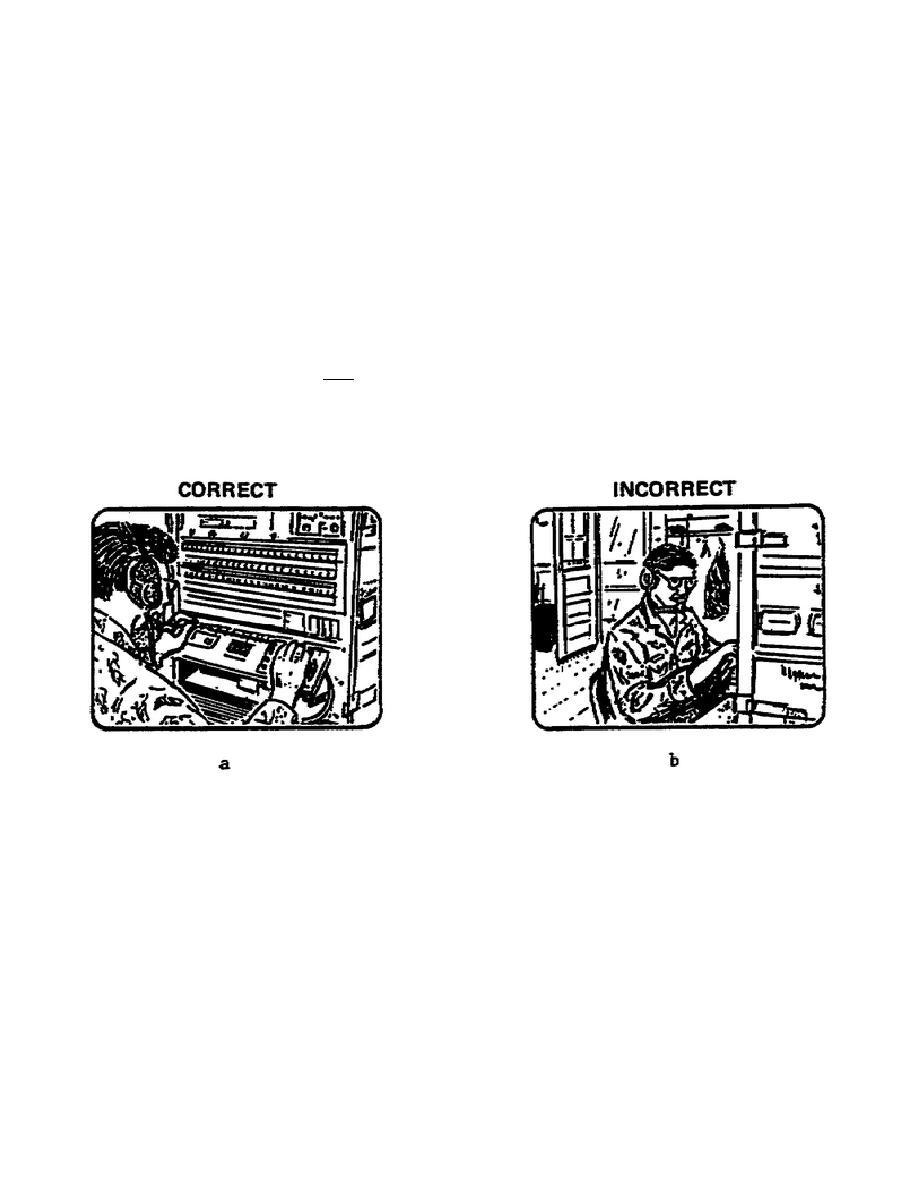
placed upon itself?
How would a door knob see a hand about to grab it?
(The video for each point of view reversal here could be easily accomplished
in production by laying a transparency on the camera lens, and by having a
person reach for a lens as they would a door knob.)
(1) A program needs to be "spiced up" production-wise by using this
simple technique. In the context of a script, if someone is about to open a
door, have his hand reach for the camera lens, then cut to a shot, from the
other side of the door opening.
(2) This technique can be applied in numerous ways, and should be.
Its use goes largely unnoticed, but it adds to the attractiveness of any
program.
The technique may be summed up as letting the viewer see things
from different and unexpected points of view.
f. Write for the "eye" of the student:
when we write video for a
visual information program, we should write for the eye of the viewer. When
possible, he should see things as he will see them on the job.
For
instance, if we are teaching someone to operate a radio, that task should
appear on the screen as in Figure 2-4a, not like Figure 2-4b.
Figure 2-4.
Correct and incorrect shots
g. Sometimes simple stick-figure drawings work as well as artists'
renderings or beautiful photographs. Not everyone can afford the luxury of
having great visual support. Simplicity in the video can be a virtue.
3.
Let's summarize the principles of video script writing.
a. High visual - at least eight visuals per minute;
b. Use camera angles and movements for changing visuals.
c. Visual metaphor - using the video to emphasize a point by-depicting
something in an unexpected way. (Remember that audiovisual enters through
the eyes and ears?) It is a visual play on words.
26


 Previous Page
Previous Page
